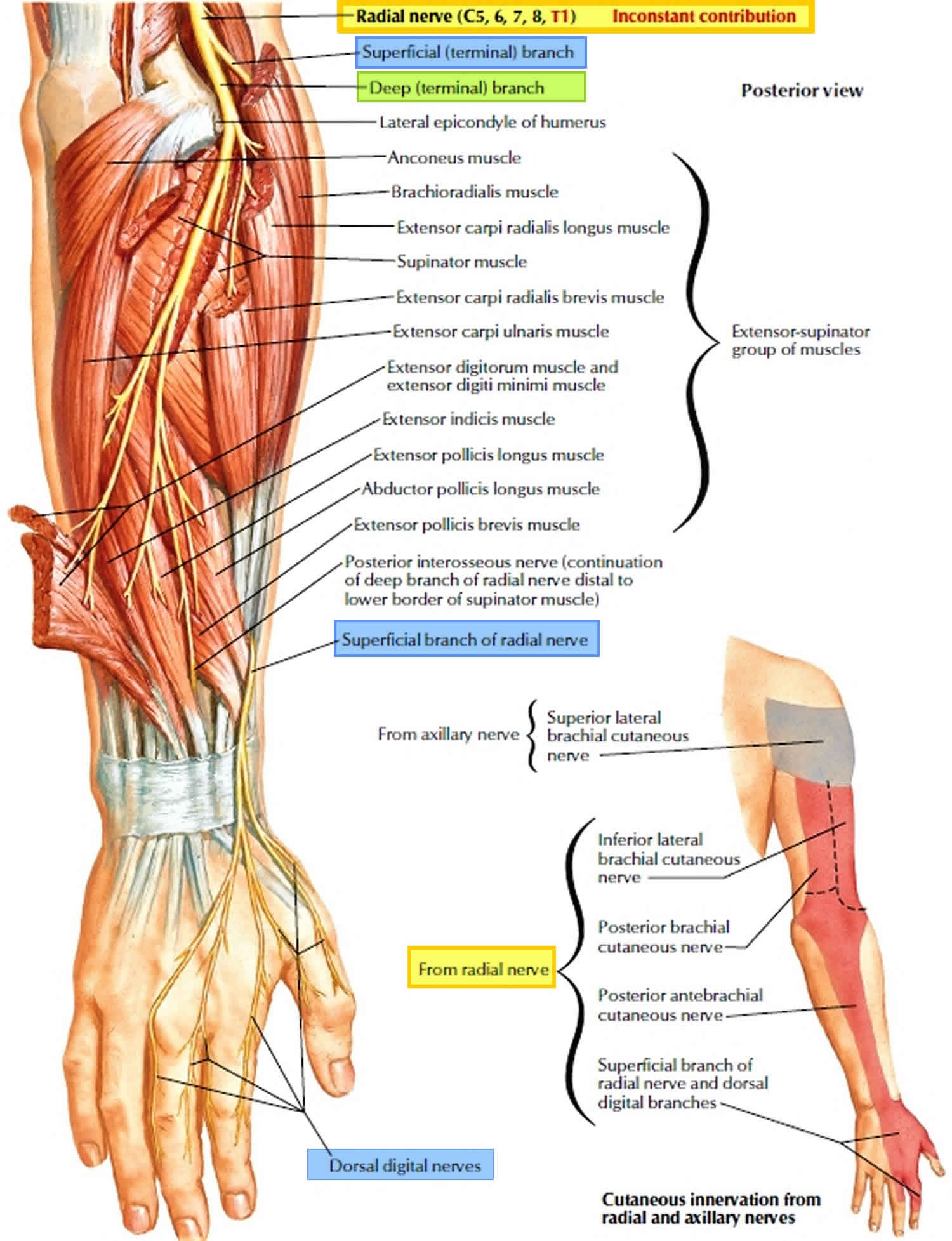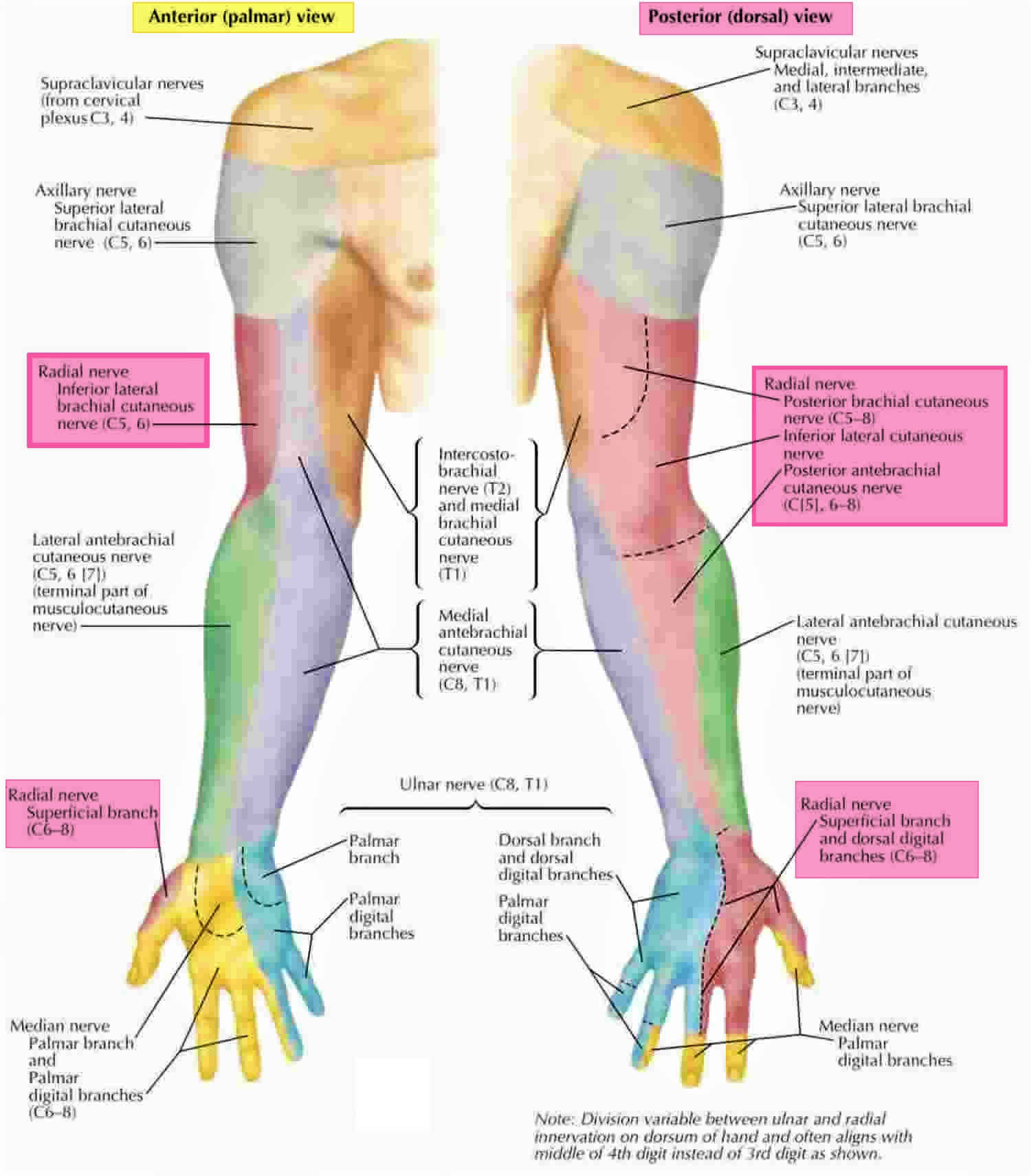


This is achieved by the addition of sensitising movements distant to the pain such as: If a sensation is provoked, differentiation between neurogenic and non-neurogenic sources of pain should be performed. Patients are to be instructed to report the onset of any sensation such as stretch, tingling or pain anywhere in the arm or neck. The joints are moved sequentially and to the end of range or until symptoms are produced. The upper limb neurodynamic test for the radial nerve (ULNT2b) is performed with the patient in supine.
#Radia nerve Patch
ĭue to overlapping cutaneous nerves, there is only a small patch exclusive to the radial nerve on the dorsum of the thumb web. Interphalangeal joints can be extended by the lumbricals and interossei due to their attachments at the dorsal digital expansion. Both tasks will be difficult to complete as movement will be ineffective. This can be observed in a simple gripping task or asking the individual to make a fist. Ī loss of synergic action between wrist flexors and extensors causes excessive and unwanted wrist flexion. Motor function of the triceps are usually preserved as they are innervated superiorly whereas wrist and digit extensors are often paralysed leading to the dropped wrist deformity.

Mechanisms of injury can be humerus fracture, a direct blow or sustained pressure (i.e. Radial nerve injuries are associated with the path it travels close to the humerus. It descends between the deep and superficial extensor muscles and lies on the interosseous membrane and ends in a flattened expansion. It begins anterior to the lateral epicondyle of the humerus and enters the posterior compartment of the forearm through the two heads of supinator where it curves around the lateral and posterior surfaces of the radius. The deep branch of the radial nerve or posterior interosseous nerve, is entirely motor. It further divides into the digital nerves. In the distal third of the forearm, the nerve rises posteriorly from below the tendon of brachioradialis and pierces the deep fascia to become superior. It travels along the anterolateral side of the forearm. The superior branch of the radial nerve continues on from the radial nerve anterior to the lateral epicondyle. The lower lateral cutaneous nerve of the arm arises before the radial nerve, pierces the intermuscular septum and becomes cuntaneous below the deltoid. The posterior cutaneous nerve of the arm arises in the axilla, piercing the deep fascia near the posterior axillary fold. Anterior to the lateral epicondyle the nerve splits into its terminal superficial and deep branches. The nerve enters the anterior compartment by piercing through the lateral intermuscular septum where it continues between brachialis and brachioradialis. Through this space, the nerve enters the spiral groove of the humerus and descends obliquely between lateral and medial heads of triceps where it reaches the lateral border of the humerus in the distal third of the arm. It enters the posterior compartment of the arm passing through a triangular space, formed by the lateral humerus, long head of triceps and teres minor. In the axilla, it lies behind the axillary and upper brachial arteries and passes anterior to the tendons of teres minor, latissimus dorsi and subscapularis. The radial nerve is one of the terminal branches of the posterior cord.


 0 kommentar(er)
0 kommentar(er)
